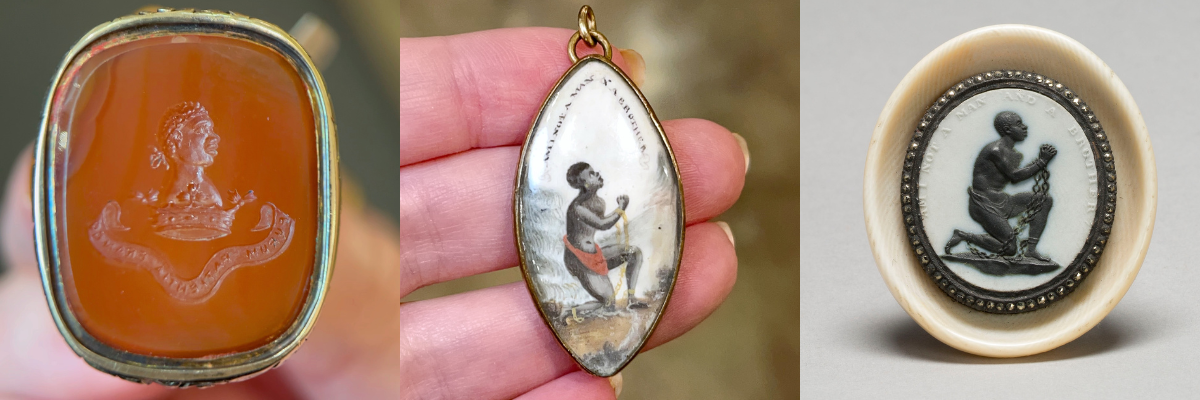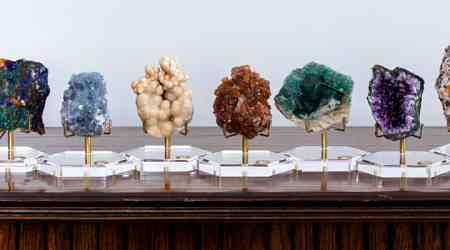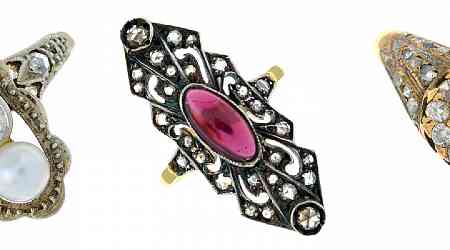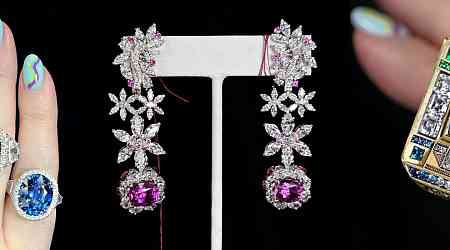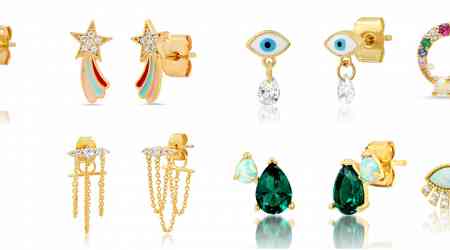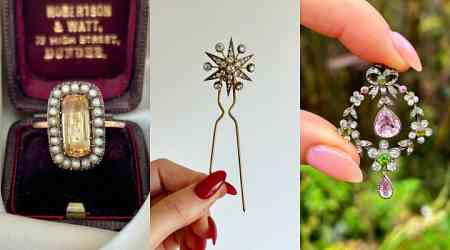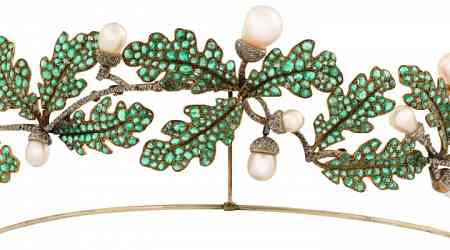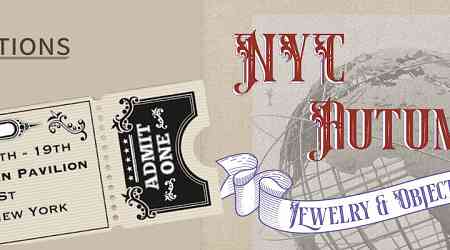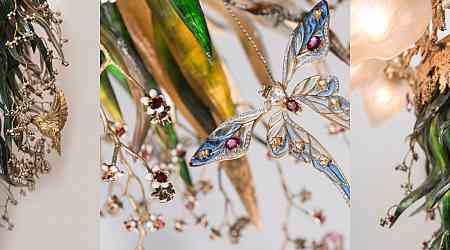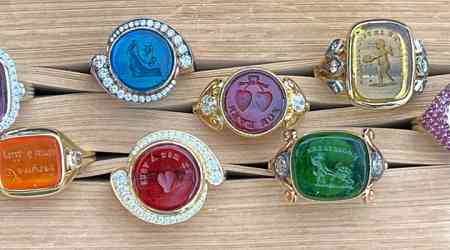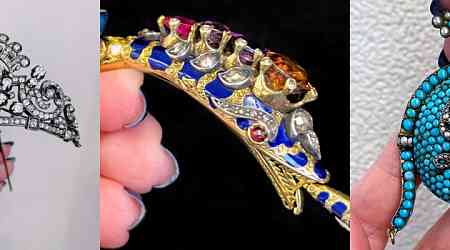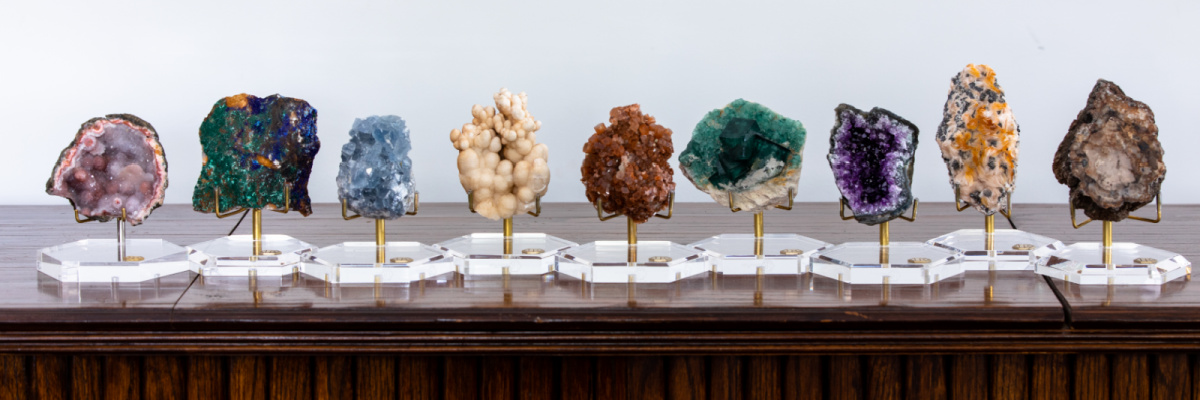We’re going to look at the abolitionist jewelry of the anti-slavery movement, a fascinating jewelry category that is as important as it is rare.

Abolitionist jewelry of the 18th and 19th century anti-slavery movement.
Tomorrow is : a day honoring June 19, 1865; the long-overdue day when the enslaved people of the United States were finally free. This feels like the perfect time to explore the fascinating history of abolitionist jewelry and its role in the 18th and 19th century anti-slavery movement.
Much like the social justice warriors of the Suffragette movement, the majority of serious abolitionists did not dedicate much of their time, money, or energy into jewelry that triumphed their cause. True examples of abolitionist jewelry are scarce because not much of it was created.
We’re going to begin by looking at one very influential type of abolitionist jewelry with examples from museum collections, and then we’re going to look at two examples of abolitionist jewelry that I’ve had the honor of photographing personally. After that, we will examine these artworks through a modern lens and highlight their problematic elements.
This article was made possible by a number of knowledgeable sources, all of which are credited at the end.
The Wedgwood medallion
The best known abolitionist jewelry is the Wedgwood anti-slavery medallion. The image at the top of the page shows a circa 1787 example from while the one below, in an embellished frame, is from the .

Designed by Josiah Wedgwood in 1787, the Wedgwood anti-slavery medallion was created for the Society for the Abolition of the Slave Trade, a London-based group dedicated to publicizing their cause through dissemination of anti-slavery books, pamphlets, prints, and artifacts.
The Wedgwood medallions were distributed at the Society’s meetings for free to promote awareness. Typically produced in black and white jasperware (a type of pottery), instead of the Wedgwood company’s signature blue and white, the Wedgwood anti-slavery medallion depicts the the figure of an enslaved Black man in chains and a loincloth, kneeling in a subservient posture, with his hands clasped in supplication, beneath the words “Am I not a man and a brother.”
The medallions were very popular among abolitionists of the time: thousands were produced and set into abolitionist jewelry in the form of pendants, bracelets, hair accessories, brooches, buckles and more.
The Wedgwood medallion originated in England, but it soon made its way to the American abolitionists. In 1788, Josiah Wedgwood included 500 Wedgwood anti-slavery medallions with a letter to Benjamin Franklin, who was President of the Philadelphia Society for the Abolition of Slavery at the time.

Wedgwood’s design was widely used in abolitionist pamphlets and other paraphernalia on both sides of the Atlantic. The above is an American take on the motif showing an enslaved woman instead of an enslaved man, with the words “Am I not a woman and a sister.” This example is a copper token created by Gibbs, Gardner and Company for the American Anti-Slavery society in 1838, a full fifty years after Wedgwood’s original medallion.
A fantastic example of how far the influence of Wedgwood’s design truly reached.
An Abolitionist Miniature
This exquisite example of abolitionist jewelry was in the collection of when I visited their booth at the 2023 Washington Winter Antiques show. This miniature caught my eye immediately, and the eminently knowledgeable Sandy was kind enough it tell me all about it while I photographed it.

Can you see why we started with Wedgwood? This piece also dates to the late 1700’s but is much more high end than the British jasperware medallions. It uses the same motif and the same slogan – the artist was obviously inspired by Wedgwood’s design.
The more closely you look at this piece, the more impressive it becomes. A tiny oil painting on an ivory plaque, this miniature’s every hand-painted brushstroke accomplished impossibly miniscule details with great precision. You can see each the kneeling figure’s facial features and hair, the curve of each letter, even the negative space inside the links of the chain.
The figure even appears to be wearing a gold earring, a detail not included in Wedgwood’s original design.

This ivory miniature is backed with gold and encased by a domed lens. It started life as a brooch but was later converted to a pendant.
This piece’s origin is unknown. Was it commissioned by a abolitionist with money to spare? Did a jeweler friendly to the cause create it as a passion project, or for their own personal collection? Perhaps it was gifted to a prominent figure in hopes that they would wear it publicly and raise awareness.
Whatever its story, to call this particular piece of abolitionist jewelry rare is an understatement. I’ve never seen another one like it and I probably never will.
An Abolitionist Fob
I mentioned above that the miniature from Sandy Jacobs Antiques was the first piece of abolitionist jewelry I encountered in my career. This fob was the second piece I ever saw, and I happened across it on the same day of the 2023 Washington Winter Antiques Show, at The Spare Room Antiques’ booth.
Both were chance discoveries: I just happened to spy both pieces in their respective cases and was lucky enough to have relationships with both dealers that meant I could ask for a closer look.

This heavy 18 karat gold fob is set with a carved carnelian seal that bears the words “PURUM PATIENTIA FRANCE,” which translates to “Under a clear sky, France suffers.” Above the words is what appears to be a family crest with a stylized Black male figure’s face above a crown.
This fob’s abolitionist message is more oblique than the Wedgwood medallion or the miniature, but Jen Shapiro and Jackie Smelkinson of were kind enough to give me a mini history lesson on its significance.
In their own words:
“Notwithstanding the word ‘France’ in the inscription, our wax seal fob is English. The seal harkens back to the British abolitionist movement in France, during which time the British people actively sought to pressure the French to abolish slavery.
This fob seal shows the strong anti-slavery movement that existed among the British following the reinstatement of slavery by Napoleon. It was the anti-slavery movement in England which induced the second abolition of slavery in France through the July Revolution of 1848, which officially abolished slavery in France once and for all.”

I’m particularly fascinated by the figure carved into this fob. Unlike the Wedgwood design, this man isn’t subservient and submissive or begging for help. He stands proud and tall, above a crown, with his hair tied back by a ribbon bow.
Are we looking at a free Black man, thriving in France’s theoretical anti-slavery future? I am not sure, but I think it’s possible.
The fob itself features a rich design of stylized acanthus leaves, a motif commonly used in mourning jewelry and gravestone engravings. Acanthus leaves symbolize the heavenly garden, but they also represent rebirth, immortality, and resurrection. It feels like a very appropriate adornment for this fob that grieves for France’s enslaved population while calling the country to embrace a better future.
Important considerations
While it would be wonderful to simply say “all abolitionist jewelry is good because abolishing slavery is a good cause,” the fact is that there are many less than ideal elements to these fascinating artworks that we must acknowledge.
To start, let us return to the Wedgwood medallion. Josiah Wedgwood’s intentions may have been positive, but his imagery is unreservedly problematic.

The depiction of this Black figure prostrating himself before the viewer with his hands upraised in supplication implies that the enslaved man is a weak, pitiable figure humbly imploring the (presumably white) abolitionists of late 1700’s London for their charitable assistance. Everything about it suggests submission and helplessness to an extent that belies the equality suggested by medallion’s slogan.
The Wedgwood medallion may have inspired abolitionist imagery across two continents, but it’s also vitally important to clarify the goals of London’s Society for the Abolition of the Slave Trade, for whom the medallion was originally created. The Society was fighting specifically for the abolition of the slave trade only. They did not advocate for currently enslaved people to be freed or for slavery to outlawed.
Even though Josiah Wedgwood was personally an abolitionist, he undeniably benefited from the existence of the slave trade. The Wedgwood company was immensely financially successful and much of that profit came from aristocratic clients who used wealth earned both directly and indirectly from the slave trade to purchase its wares.
On top of that, Wedgwood primarily made ceramic housewares, which would have been used in domestic service to present food that was often planted, harvested and/or prepared by enslaved and colonized people.

One must also ask: who is the man on the Wedgwood medallion? Was he modeled on a real person, or is he simply an artist’s amalgam of exaggerated characteristics stereotypically associated with enslaved men?
If there was a model, was he paid for his time? Did he consent to the use of his image for this purpose? Was that consent given in a situation that made saying “no” possible? Why isn’t his name part of this story?
The same goes for the female figure on the women’s version of the design and the profile on the French fob. We don’t know any of these answers, but they’re important questions to ask.
Finally: there’s the fact that I am white and so are the antique jewelry dealers who shared these pieces of abolitionist jewelry with me. That’s an important point that deserves its own section.
Privilege & Perspective
Because I am a white woman, it’s not possible for me to know how it feels to experience abolitionist jewelry as a descendant of the enslaved people that these artworks depict or even as a person with the same skin color as the figures on these artworks.
I have tried to do justice to this subject by presenting the information thoughtfully and with awareness of how my own identity informs my point of view, but I also want to acknowledge that there are vital elements of this jewelry category that I cannot personally experience.
I would like to invite you all to continue this discussion by sharing your thoughts about abolitionist jewelry with me, either in the comments section below, through social media, or privately though email. My socials and email are linked at the top of this page.
If you’d like to learn more about the history of Black figures in antique art and jewelry, I highly recommend the writings of Tanzy Ward, an antique jewelry dealer who has written two books about this frequently overlooked subject. (I’m currently reading her book .)
Find and .
I also highly recommend Nia Tahani of The Gem Corps’s Instagram series about de-stigmatizing and rehoming antique Blackamoor style jewelry – it’s fascinating and extremely insightful. You may recognize Nia’s name from my recent feature on her Black history and social justice talisman, Sweet Chairiot.
Find and .
Thank you for coming on this jewelry journey with me, my darlings.
Abolitionist jewelry is a fascinating and nuanced subcategory of jewelry history and it has been my absolutely honor to share these meaningful treasures from the past with you today.
Sources:
“Am I Not a Woman and a Sister: Women and the Anti-Slavery Campaign.” Woman and Her Sphere, 1 Oct. 2012, womanandhersphere.com/2012/10/01/am-i-not-a-woman-and-a-sister-women-and-the-anti-slavery-campaign/.
Anti-Slavery Medallion, The Art Institute of Chicago, www.artic.edu/artworks/66185/anti-slavery-medallion.
“Anti-Slavery Cameo.” Online Collection of the Walters Art Museum, The Walters Art Museum , 1 Aug. 2022, art.thewalters.org/detail/17899/anti-slavery-medallion/.Jacobs, Sandy. Conversations with antique dealer, January 2023.
Jacobs, Sandy. Video of rare abolitionist miniature, Instagram, November 7, 2023.
“Josiah Wedgwood: Antislavery Medallion: British, Etruria, Staffordshire.” The Metropolitan Museum of Art, www.metmuseum.org/art/collection/search/191076. Accessed 17 June 2024.
National Museum of American History Smithsonian Institution. “Antislavery Medallion. www.flickr.com/photos/nationalmuseumofamericanhistory/8360976981.
Oldfield, Dr John. “History – British History in Depth: British Anti-Slavery.” BBC, BBC, 17 Feb. 2011, www.bbc.co.uk/history/british/empire_seapower/antislavery_01.shtml.
Peters, Hayden. “Symbolism, the Acanthus.” Art of Mourning, 10 Jan. 2022, artofmourning.com/symbolism-sunday-the-acanthus/.
Shapiro, Jennifer. Personal emails with antique dealer, January 2023.
Stoehrer, Emily. “’Slave-in-Chains’ Medallion.” Museum of Fine Arts Boston, Museum of Fine Arts Boston, 16 Feb. 2017, www.mfa.org/entry/2017/slave-in-chains-medallion.
The Wedgwood Anti-Slavery Medallion · V&A, Victoria and Albert Museum, www.vam.ac.uk/articles/the-wedgwood-anti-slavery-medallion.
“Token with ‘Am I Not a Woman and Sister.’” National Museum of African American History and Culture, nmaahc.si.edu/object/nmaahc_2018.52.
“Wedgwood Anti Slavery Medal.” Odyssey Traveller, www.odysseytraveller.com/articles/wedgwood-anti-slavery-medallion/.


















